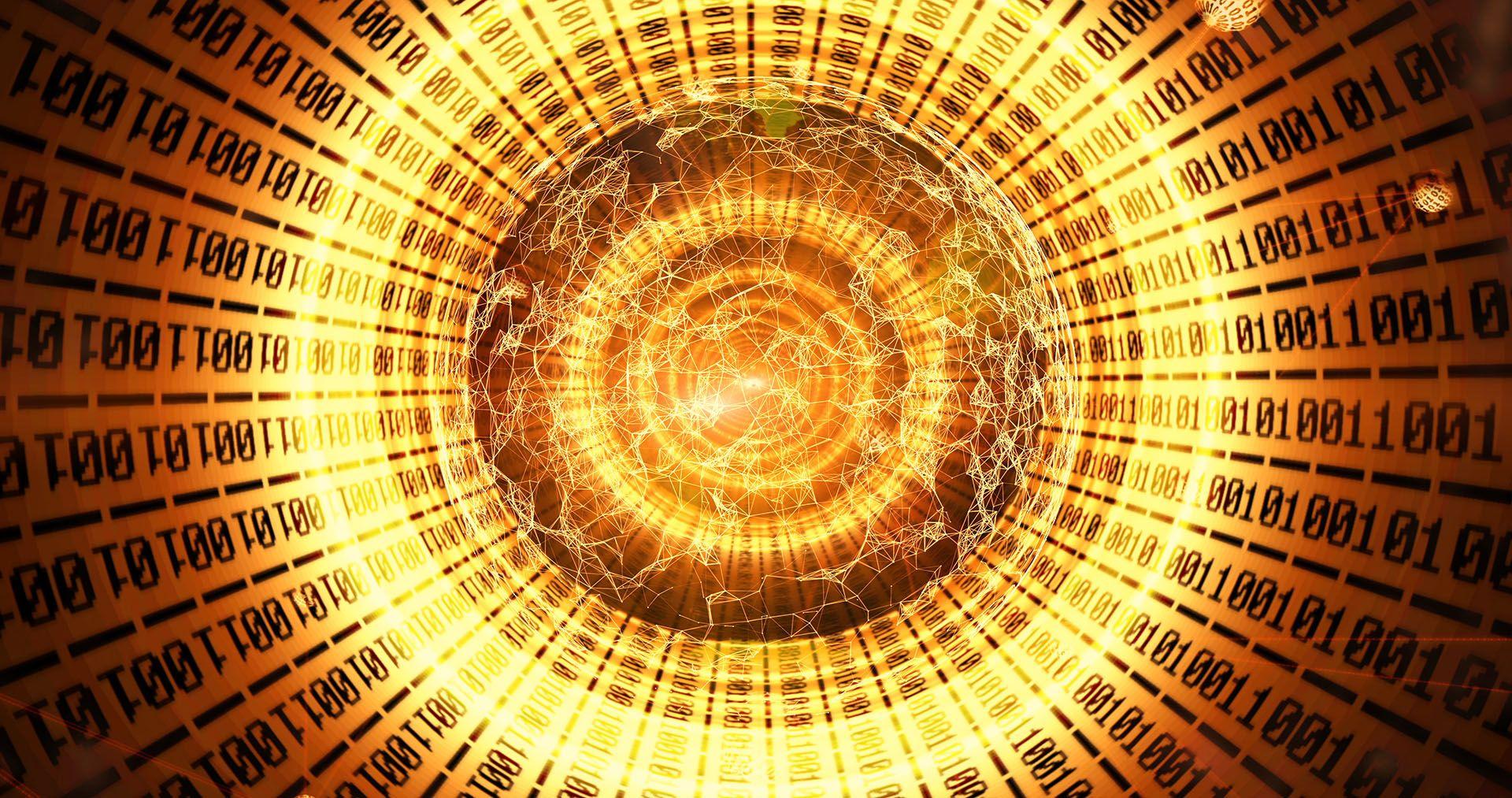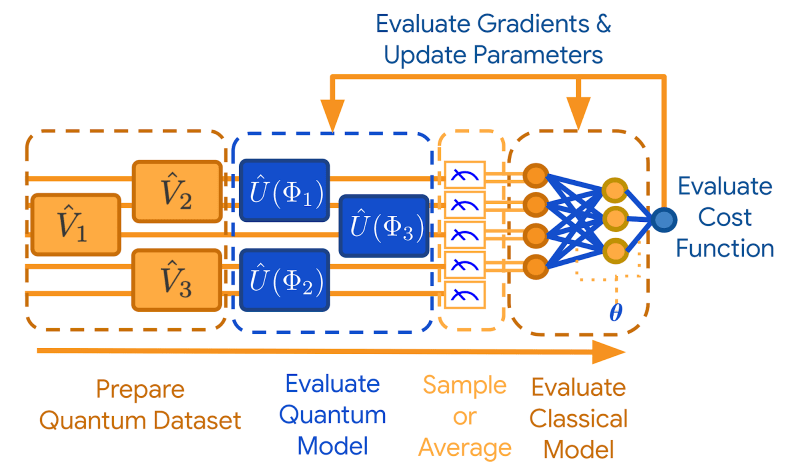Quantum artificial intelligence is here to pave the way for the next chapter of our digital intellect pursuit. Artificial intelligence is a transformative technology, and it needs quantum computing to achieve significant improvement. Although artificial intelligence may be used with conventional computers, it is restricted by conventional computational capabilities. Artificial intelligence’s capacity to tackle more complex issues can be enhanced by quantum computing, allowing it to solve much more complicated problems.
What is Quantum Artificial Intelligence?
Quantum artificial intelligence allows quantum computing to be used with machine learning algorithms. Quantum AI helps scientists get results that would otherwise be unattainable using conventional computers owing to the computational advantages of quantum computing.
The application of quantum artificial intelligence algorithms has two major research focuses: machine learning and artificial intelligence. This calculation system differs from previous ones in that it may represent many states simultaneously, which is particularly useful when utilizing AI approaches.
Voice-assistants might profit from this implementation in a variety of ways. As quantum would significantly increase their accuracy, it will boost their processing power and the amount of data they could handle. Because of the enormous number of calculation variables that a quantum computer can handle, it may deliver faster answers, similar to those provided by a person.

Why does AI need a quantum boost?
AI has made tremendous advances in recent years but has yet to overcome computational limitations. The unique features of quantum computing may help us overcome the barriers to attaining AGI (Artificial General Intelligence). Quantum computing’s ability to rapidly train machine learning models and develop optimized algorithms could be exploited.
We’re approaching the limit of what a typical computer can handle, and the amount of data keeps growing. Moore’s Law, which states that the number of transistors on integrated circuits will double every two years, has proven remarkably durable since it was coined in 1965. The leading companies in the field are racing to be the first to develop a viable quantum computer that would be more powerful than today’s computers and solve increasingly complex issues.
Quantum computing may produce a more efficient and stable AI that can complete years of analysis in a matter of hours, resulting in technological advancements. Today’s AI is having trouble with such issues as neuromorphic cognitive models, adaptive machine learning, and reasoning under uncertainty. These will be the most likely remedies for future quantum AI.
The connection between quantum mechanics and artificial intelligence also yields benefits in both directions. Now, scientists are employing traditional machine learning to advance our knowledge of quantum physics. The accuracy and efficiency of AI algorithms can be used to fine-tune quantum circuits, which can help eliminate errors and save time in most problem areas of quantum research. Machine learning has also aided physicists in detecting quantum entanglement and identifying new phases of matter.
New capabilities
Generative models of quantum artificial intelligence algorithms not only answer a question but also produce output such as an image, music, video, or other types of information. Consider if you have a lot of pictures of the side of a face but not enough images of the front of a face. If you want security detection software to identify dual facial recognition on the front side of a person’s face, these generative models can be used with great precision to generate more frontal views of a face. The addition of quantum processing units into the conventional framework has the potential to improve image quality.
Traditional machine learning methodologies are only as good as the data you provide. It will be ineffective if you try to train a conventional face detection algorithm on a small set of images. However, you can use quantum-enhanced generative models to expand this dataset by including more pictures (both quantity and diversity), which will improve the detection model considerably.
One way to effectively evaluate and improve AI systems is to mimic real-world data. We can utilize quantum artificial intelligence to make fake molecules, cancer cells, or magnetic resonance images that are very similar to genuine things with the assistance of this technology. This allows us to build better machine learning models that may be applied to real-world data and issues.

How does Quantum Artificial Intelligence work?
According to Google, the working principle of quantum artificial intelligence consists of four main steps:
- The first step is to convert the quantum data into a regular one. After that, this data is converted into a multi-dimensional array of numbers as quantum tensors. Quantum artificial intelligence transforms these tensors to create a dataset that may be used further.
- Quantum neural network models are chosen based on the quantum data structure. The goal is to extract information hidden in an entangled state using quantum processing.
- Quantifying quantum states extracts information from the classical distribution in the form of samples. The values are derived from the quantum state itself. Quantum artificial intelligence provides procedures for combining many runs, each with its own steps (1) and (2).
- Deep learning algorithms identify relationships between data after converting it into classical data.
The final stages of deep learning’s cost function, gradients, and parameter updates are standard methods in the field. These phases ensure that a good model for unsupervised activities is produced.
Better algorithms
Quantum artificial intelligence’s flexibility in representing and handling so many states makes it extremely useful for various problems. The first applications we see are materials science, where modeling small molecules is computationally demanding. By, for example, determining the most efficient path among any number of alternatives in the future, larger equipment will be able to create medicines and optimize logistics.
Most present-day industrial applications of artificial intelligence are based on supervised learning, which is used in problems like picture recognition and consumption forecast. Based on the various QML concepts that have already been proposed, we can anticipate acceleration – which in some cases might be exponential – in certain of the most popular algorithms in the field, including ‘support vector machines’ and particular types of neural networks.
Dimensionality reduction techniques are another type of dimensionality reduction. These techniques represent our original data in a more compact form while keeping most features. At this stage, the scientist notes how quantum computing will be useful when pinpointing certain worldwide features in a dataset rather than individual details.
Finally, there is a lot of work to be done around reinforcement learning and to start applying it to real-world problems. Its potential to deal with complex situations has been demonstrated by its use in video gaming. The most demanding procedure, in terms of computing work and time consumption, is training the algorithm. In this case, some theoretical methods have already been devised to speed up this training with quantum computers, which may help create an extremely strong quantum artificial intelligence in the future.






